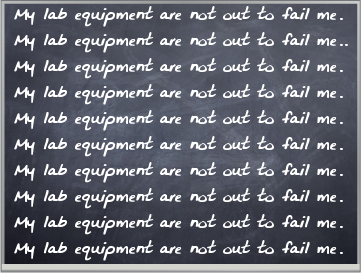| 1. Measure out 100 mL of 1.00 M HCl solution into the calorimeter. | We measured out 106 mL of 1.00 M HCl solution, but we spilled some on the lab bench as we were pouring it into the calorimeter. I think we lost ~10 mL, but this may affect the amount of heat absorbed. |
| 2. Precisely weigh out ~ 0.2 g of Mg metal turnings. | Mg weight = 0.198 g |
| 3. Add the Mg to the HCl and close the calorimeter cover. Stir occasionally and monitor the temperature. | Initial recorded temperature was 80 degrees, but we need to verify this with another trial. |
